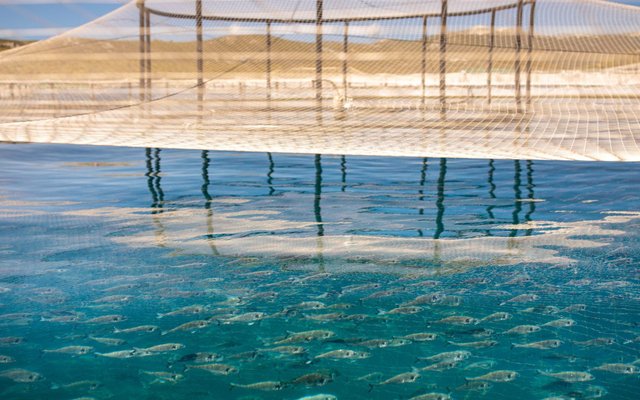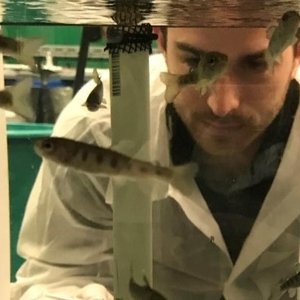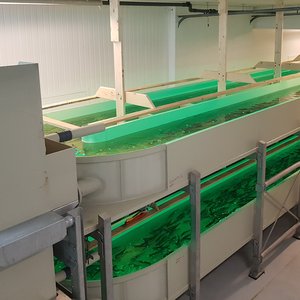The Aquaculture Stewardship Council (ASC) is running a stakeholder consultation from March 1 to April 30, 2023, on three major topics, two of which are part of the upcoming ASC Farm Standard: Water Quality (Criterion 2.7) Fish Health and Welfare (Criterion 2.14). The third topic covers the Scope Extension Project to the European species of Pike-perch.
ASC welcomes feedback on the proposed indicators, metrics, and clarity, implementation, and auditability, as well as the collection of data and literature.
Key proposals on fish health and welfare
There are two main proposals for Fish Health and Welfare which cover audit mechanism for Criterion 2.14c on Slaughter, and a tentative indicator to address shrimp eyestalk ablation.
There is currently no mechanism within the ASC auditing system to cover slaughter operations. For this reason, a new audit mechanism is being proposed, with the purpose of increasing transparency and assurance. If slaughter takes place at the farm, it will be audited as part of the ASC farm audit carried out through a Conformity Assessment Body (CAB), alongside other ASC Farm Standard requirements.
However, if slaughter does not take place at the farm but at another facility run by the same or another company, then the audit mechanism can be executed by either an internal audit (in the case of vertically integrated facilities), a second-party audit by the farm of Unit of Certification or by a third-party audit by an ASC-approved auditor. In all these cases, the audit reports will be checked by the CAB during the ASC Farm audit, and the CAB will have the capability of organizing a punctual visit to the slaughterhouse if considered necessary.
Secondly, a criterion on the topic of eyestalk ablation is being considered as a tentative indicator within the first version of the ASC Farm Standard. Recent research, suggests that “ablation-free” production is possible in Pacific white shrimp (L. vannamei). The current proposal thus only covers the Pacific white shrimp and no other species (e.g. black tiger shrimp or P. monodon) due to a lack of research on the specific species.
A proposed indicator for Pacific white shrimp will require farms to source all nauplii (the crustacean’s first stage of larvae), larvae or post-larvae from “ablation-free” female broodstock within certain timelines.
ASC introduces new species: Pike-perch
With the growing consumption of the European species of pike-perch (Sander lucioperca) and an increased producer demand from Europe for certification, ASC is introducing the ASC pike-perch module. The ASC pike-perch module uses existing requirements from multiple ASC standards. The proposed requirements applicable to pike-perch are intended to function as a module to the ASC Freshwater Trout Standard given the similarities in impacts driven by the culture systems and species-specific characteristics. Where some environmental and social indicators are lacking from the Freshwater Trout Standard, some indicators from the Pangasius Standard and Tropical Marine Finfish Standard (TMF) were selected to be added to the pike-perch module. Additional health and feed management requirements, which have been revised more recently, are added to the Module from the Seabass, Seabream and Meagre Standard and the Shrimp Standard.
The ASC Pike-perch Module will be applicable exclusively to Recirculating Aquaculture Systems (RAS) and pond systems. The module will be structured based on seven principles covering compliance with laws and local regulations (1), conservation of habitat and biodiversity (2), minimizing negative effects on water resources (3) and risks of diseases transmission (4), responsible use of environmental resources (5), social responsibility (6), and requirements for fingerlings and egg suppliers (7).
The module will be launched in October 2023 and will be effective in 2024.
Water quality indicators to address eutrophication
Addressing water quality is a very important topic in fish farming and one of the major risks that need to be addressed is eutrophication, or the progressive and excessive enrichment of water with nutrients (such as nitrogen or phosphorous) which could lead to harmful algal bloom, reduction of dissolved oxygen and fish kills events.
The new water quality proposal, which will be included in the ASC Farm Standard, categorizes receiving waters according to their nutrient retention capacity based on two major water systems: lentic systems (water bodies with a still or slow flow such as lakes or reservoirs) or lotic systems (water bodies with faster flow such as rivers).
In this context, the indicators within the proposal have been developed to identify the nutrient retention capacity of the receiving water body and at-risk water bodies’ susceptibility to additional nutrient inputs. Where relevant, additional assimilative capacity assessment and coordinated area management agreements and actions are required.
The proposal requires farms to monitor water quality to prevent eutrophication by identifying when a water body is starting to show signs of upward trophic status changes. For lentic systems, when this is identified, the proposal requires farms to participate in an Area Management Agreement (AMA) to collectively monitor, prevent and mitigate eutrophication impacts.
The Criterion 2.7 proposes 31 indicators grouped into four sub-criteria, each focusing on:
- Sub-criteria 1 (lentic systems): Understanding and monitoring the quality of the water body the farm operates in and its natural retention capacity of nutrients (potentially originating from other farms);
- Sub-criteria 2 (lentic and lotic systems). Understanding, measuring and managing the risk of the farm’s contribution to eutrophication (nutrient load) of the water body.
- Sub-criteria 3 (lentic and lotic systems): Meeting requirements on managing nutrient inputs and outputs of the farm.
- Sub-criteria 4 (lentic systems): Participating in a coordinated management effort with other farms in the water body to avoid eutrophication.
Next steps
Following the stakeholder consultation, ASC will collate all the feedback received and publish a synopsis on the ASC website, also inform by email all stakeholders who provided feedback. There will be a final 30-day consultation on the final draft of the ASC Farm Standard in September 2023. Required changes, based on this consultation and if needed, will be made prior to the presentation of the full standard to the Technical Advisory Group (TAG) in January 2024.
After approval by the ASC Board, the standard will be launched in April 2024. The ASC Farm Standard will be released in Q2 2024 and will be effective a year after the release (Q2 2025).
For more information, please visit the Alignment: ASC Farm Standard page and the Species Extension Project: Pike-perch page.













